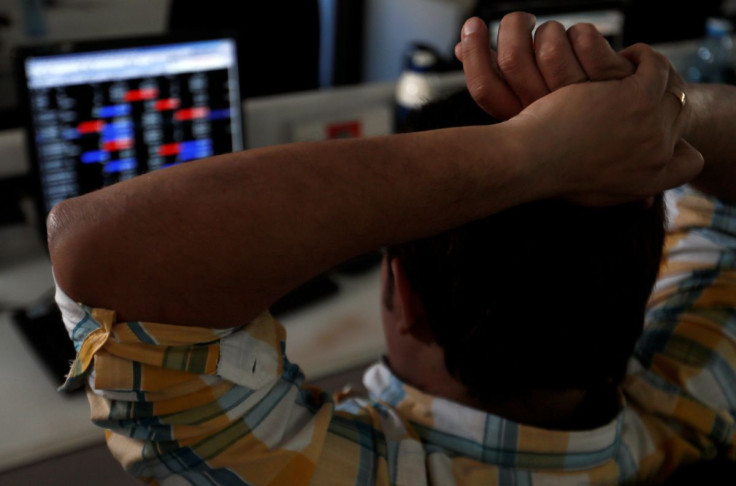Stocks In A Tailspin, Dollar Soars As Hard Landing Fears Grow

Shares sank to a 1-1/2 year low on Thursday and the dollar hit its highest in two decades, as fears grew that fast-rising inflation will drive a sharp rise in interest rates that brings the global economy to a standstill.
Those nerves and the still-escalating war in Ukraine took Europe's main markets down more than 2% in early trade [.EU] and left MSCI's top index of world shares at its lowest since late 2020 and down nearly 20% for the year.
The global growth-sensitive Australian and New Zealand dollars fell about 0.8% to almost two-year lows. The Chinese yuan slid to a 19-month trough while the dollar powered to its highest level since late 2002.
Nearly all the main volatility gauges were signalling danger. Bitcoin was caught in the fire-sale of risky crypto assets as it fell another 8% to $26,570, having been near $40,000 just a week ago and almost $70,000 just last November.
"We have had big moves," UBS's UK Chief Investment Officer Caroline Simmons, said referring as well to bond markets and economic expectations. "And when the market falls it does tend to fall quite fast."
Data on Wednesday had showed U.S. inflation running persistently hot. Headline consumer prices rose 8.3% in April year-on-year, fractionally slower than the 8.5% pace of March, but still above economists' forecasts for 8.1%.
U.S. markets had whipsawed after the news, closing sharply lower, and futures prices were pointing to another round of 0.2%-0.7% falls for the S&P 500, Nasdaq and Dow Jones Industrial later.
"We're now very much embedded with at least two further (U.S.) hikes of 50 basis points on the agenda," said Damian Rooney, director of institutional sales at Argonaut in Perth.
"I think we probably were delusional six months ago with the rise of U.S. equities on hopes and prayers and the madness of the meme stocks," he added.
MSCI's broadest index of Asia-Pacific shares outside Japan fell 2.3% to a 22-month low overnight. Japan's Nikkei fell 1.8%.
Treasuries were bid in both Europe and Asia, especially at the long end, flattening the yield curve as investors braced for near-term hikes to hurt long-run growth - an outcome that would most likely slow or even reverse rate hikes.
The benchmark 10-year Treasury yield had dropped in the U.S. and fell a further 7 bps to 2.8569% on Thursday. The gap between the highly rate-rise sensitive two-year yields and 10-year ones narrowed 4.2 bps.
In Europe, Germany's 10-year yield, the benchmark for the bloc, fell as much as 12 bps to 0.875%, its lowest in nearly two weeks.
"I think a lot of it is catch up from what happened yesterday, and also there's still a lot of negative sentiment in the U.S. Treasury curve," said Lyn Graham-Taylor, senior rates strategist at Rabobank.
SELL IN MAY
The rates outlook is driving up the U.S. dollar and taking the heaviest toll on riskier assets that shot up through two years of stimulus and low-rate lending.
The Nasdaq is down nearly 8% in May so far and more than 25% this year. Hong Kong's Hang Seng Tech index slid 1.5% on Thursday and is off more than 30% this year.
Cryptocurrency markets are also melting down, with the collapse of the so-called stablecoin TerraUSD highlighting the turmoil as well as the selling in bitcoin and next-biggest-crypto, ether.
A weakening growth picture outside the United States is battering investor confidence, too, as war in Ukraine threatens an energy crisis in Europe and lengthening COVID-19 lockdowns in China throw another spanner into supply chain chaos.
Nomura estimated this week that 41 Chinese cities are in full or partial lockdowns, making up 30% of the country's GDP.
Heavyweight property developer Sunac said it missed a bond interest payment and will miss more as China's real estate sector remains in the grip of a credit crunch.
The yuan fell to a 19-month low of 6.7631 and has dropped almost 6% in under a month.
The Australian dollar fell 0.8% to a near two-year low of $0.6879. The kiwi slid by a similar margin to $0.6240, though the euro and yen held steady to keep the dollar index just shy of a two-decade peak.
Sterling was at a two-year low of just under $1.22 as well as economic data there caused worries and concerns grew that Britain's Brexit deal with the EU was in danger of unravelling again due to the same old problem of Northern Ireland's border.
In commodity trade, oil wound back a bit of Wednesday's surge on growth worries.
Brent crude futures fell 2.3% to $104.93 a barrel, while highly growth-sensitive metals copper and tin slumped over 3.5% and 9% respectively. That marked copper's lowest level since October.
© Copyright Thomson Reuters 2024. All rights reserved.



















